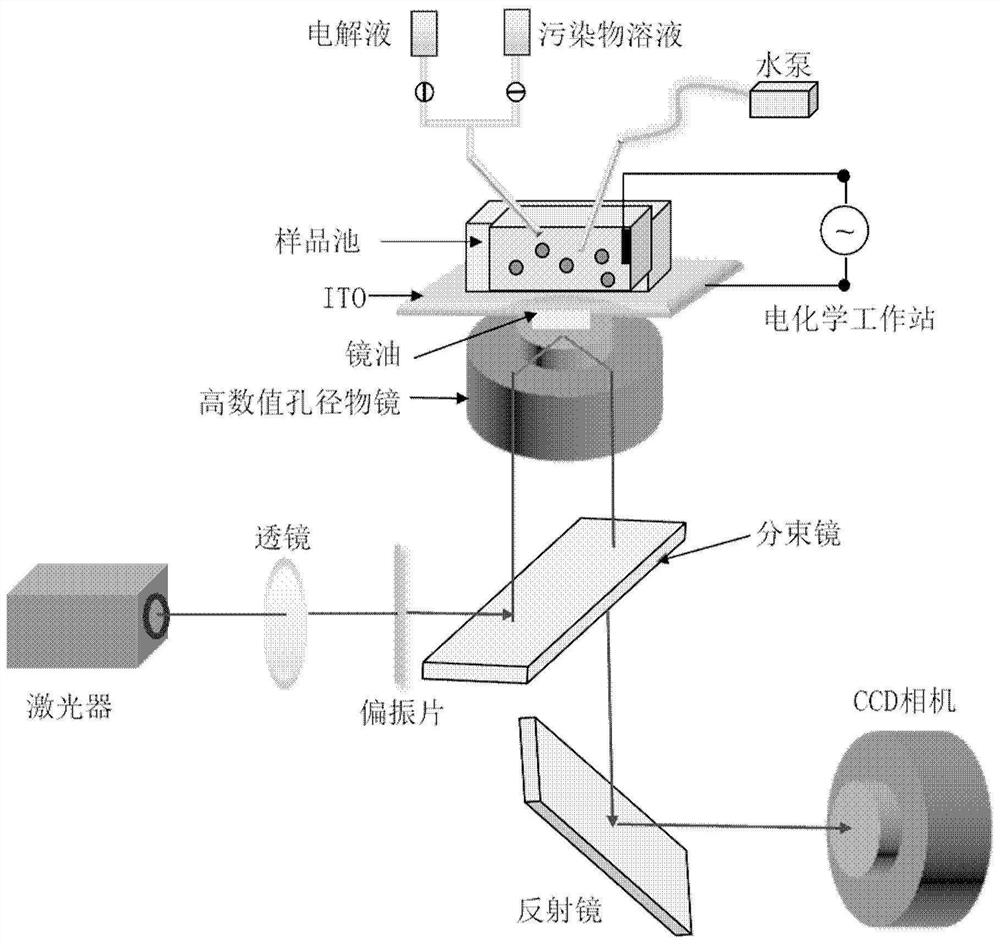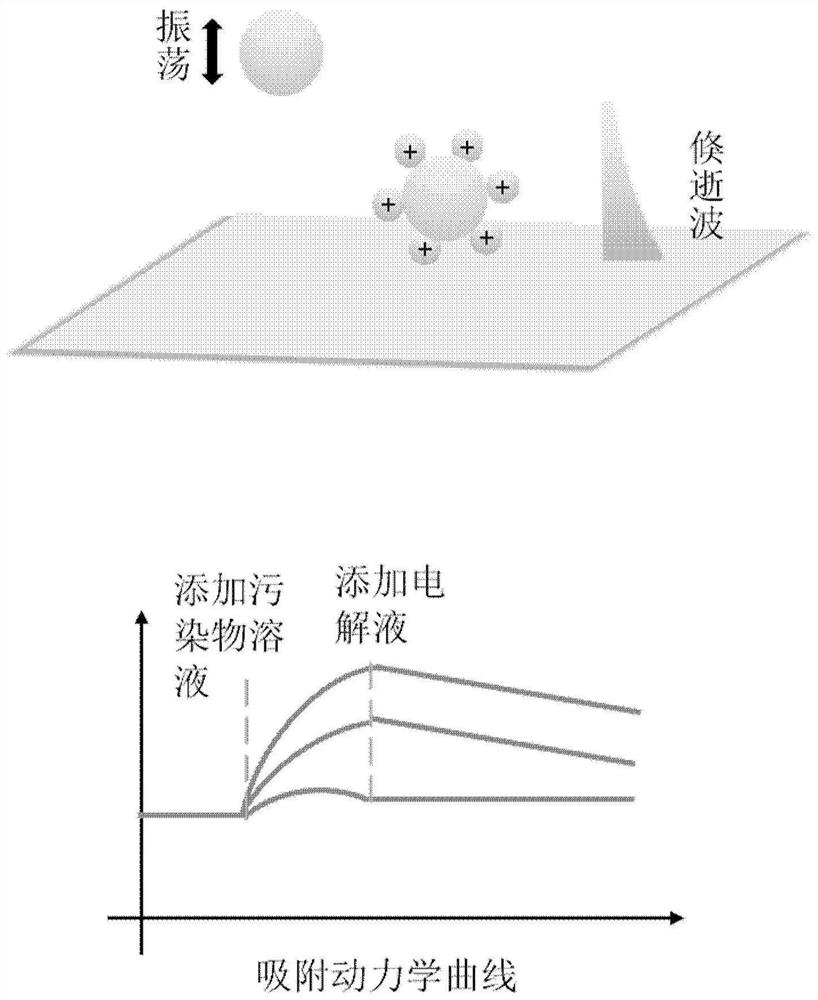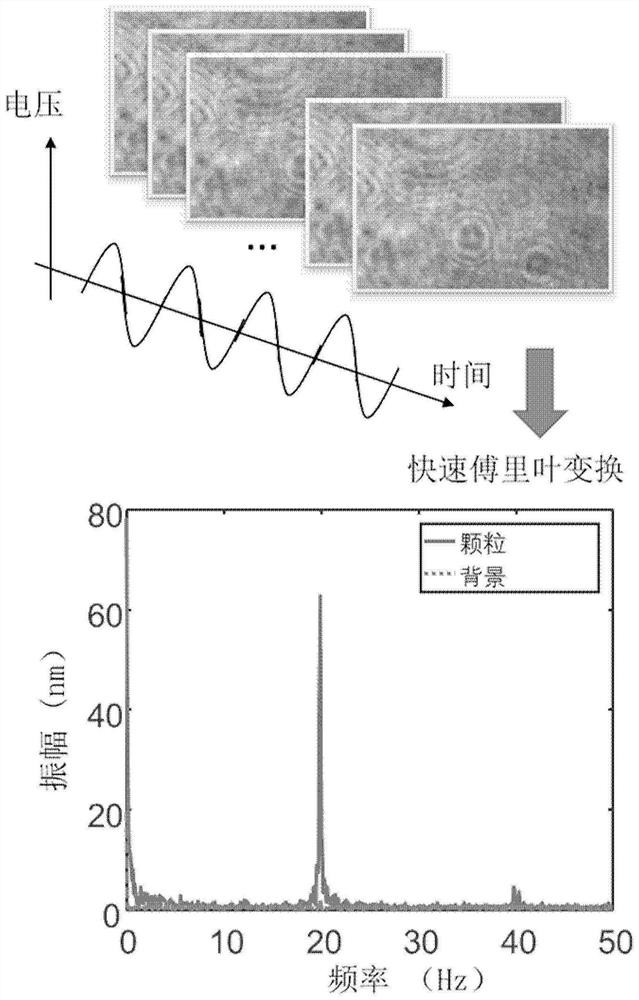Apparatus and method for analyzing interactions between pollutants and single particles
A single particle, pollutant technology, applied in the field of environmental science, can solve the problems of size effect, difficult detection, time-consuming and laborious, limited application scope, etc., to suppress the Brownian motion of particle disorder, prevent particle escape, and high-sensitivity detection. Effect
- Summary
- Abstract
- Description
- Claims
- Application Information
AI Technical Summary
Problems solved by technology
Method used
Image
Examples
Embodiment 1
[0095] Interaction of Silica Single Particles with Chromium Chloride Solution
[0096] (1) Prepare a 40 μM chromium chloride solution to simulate an environmental pollutant solution.
[0097] (2) Adjust the imaging device of the total internal reflection microscope, and adjust the incident light angle to achieve the total reflection angle for subsequent acquisition.
[0098] (3) Install the sensor chip on the sample stage of the imaging device, and inject 500 μL of 40 μM sodium sulfate electrolyte solution into the sample pool; open the valve and water pump of the dosing unit, and add sodium sulfate solution of equal concentration to the sample pool to ensure the flow rate Stablize.
[0099] (4) Inject 10 μL of silica microsphere solution into the sample cell and let it stand for 2 minutes to disperse some single particles on the surface of the ITO sensor chip. Adjust the valve and water pump of the dosing unit of the device, and add a sodium sulfate solution of equal concen...
Embodiment 2
[0107] Adsorption Kinetics of Chromium Chloride Solution on Silica Microspheres
[0108] (1) Place chromium chloride solutions of 5, 10, 20, 40 and 80 μM in different syringes of the drug delivery unit of the device, and adjust the imaging device of the total internal reflection microscope at the same time, adjust the incident light angle to reach the total reflection angle, so that the follow-up collection.
[0109] (2) Repeat steps (3), (4) and (5) in Example 1 to ensure that the silica microspheres vibrate stably in the sodium sulfate solution.
[0110] (3) Introduce chromium chloride solutions of 5, 10, 20, 40 and 80 μM into the sample pool in turn, each group of flow time is 50 s, and after each group is completed, backwash with plasma-strength sodium sulfate solution for 50 s.
[0111] (4) Use a CCD camera to record the adsorption kinetics of the same silica microsphere under different pollutant concentrations in real time, with a sampling rate of 100fps.
[0112] (5) ...
PUM
| Property | Measurement | Unit |
|---|---|---|
| particle diameter | aaaaa | aaaaa |
| particle diameter | aaaaa | aaaaa |
| concentration | aaaaa | aaaaa |
Abstract
Description
Claims
Application Information
 Login to View More
Login to View More - R&D
- Intellectual Property
- Life Sciences
- Materials
- Tech Scout
- Unparalleled Data Quality
- Higher Quality Content
- 60% Fewer Hallucinations
Browse by: Latest US Patents, China's latest patents, Technical Efficacy Thesaurus, Application Domain, Technology Topic, Popular Technical Reports.
© 2025 PatSnap. All rights reserved.Legal|Privacy policy|Modern Slavery Act Transparency Statement|Sitemap|About US| Contact US: help@patsnap.com



